Figure 4: How to trim teeth
The photo steps shown below will give the reader an idea of how to proceed with trimming their rat’s teeth. It is advisable to have your supplies ready in advance before starting this procedure. It is also recommended that there be two people for this procedure: one to hold the rat, and one to do the trimming.
It is likewise very important, that if you do not feel comfortable in your ability to trim the teeth yourself, that you take your rat to a qualified veterinarian.
Step 1: Assessing where to trim.
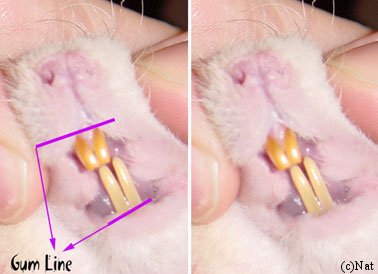 |
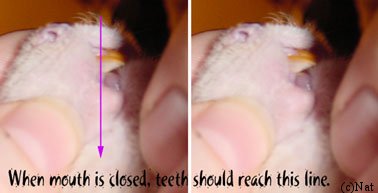 |
| Photo sets 1 and 2: Show how the teeth should appear. It is important to look closely at the teeth that you are about to trim, and more importantly, where you are going to cut because once you place the cutters in their mouth you will have to work quickly. |
|
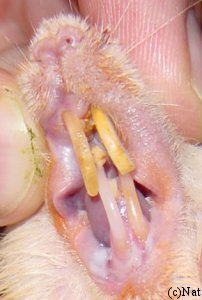 Photo 3: Shows overgrowth and curvature of teeth. |
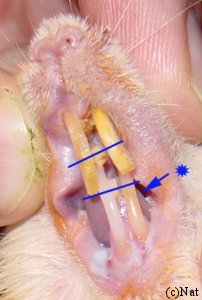 Photo 4: Assessment has been made on where to make the cut by judging the top teeth based on where they start to curve outward. They are still very yellow and therefore “healthy.” Cutting these too high will cause them to bleed considerably.The bottom teeth are not so healthy. The one on the left is white. This tooth is very fragile. The tooth on the right (*) is being used to gauge where the cut is to be made. The vein that supplies blood to the tooth will stop right above the yellow color of the tooth (where it becomes white). If you are still unsure, take a look at one of your other rats that has properly aligned teeth. It’s a lot easier when you have something to compare with. |
Step 2: Trimming top teeth
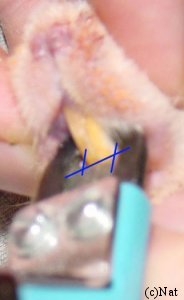 Photo 5: It is important to make the cut so that your rat will be able to start grinding his teeth down on his own again, you’ll want to cut diagonally so that the clippers are pointing upward. This will create a nice shelf on which to rub the lower teeth. For the top teeth, the guillotine type trimmers (made for cat claws) are a necessity – those teeth are thick and strong. |
Step 3: Assessing and trimming of bottom teeth
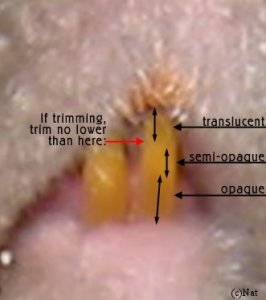 Photo 6: Bottom teeth diagram and where to cut. |
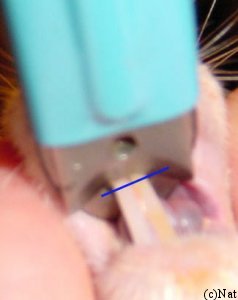 Photo 7: A more appropriate tool for the bottom teeth is small animal nail-trimmers (type used for cat, guinea pig, or rabbit) for a cleaner cut, but for this rat, Nat states that this rat would only tolerate the guillotine type cutters. For the bottom teeth you want to aim for a straight cut. Unlike the top teeth, the bottom teeth do not need to be diagonal as they will use their top teeth to grind them down evenly. The diagonal you see in a rat’s healthy mouth is a result of the grinding of the lower teeth. Also you can usually trim the bottom teeth one at a time if you use the standard nail trimmers Be sure before you do any cutting that you’ve made sure the rat’s tongue is not in the way of the clippers. Assess for any bleeding in the event of small accidents with clipping teeth to short or catching tissue in the clippers. Stop and apply a bit of flour or cornstarch to halt bleeding. |
Photos and description courtesy of Nathalie Baldwin at RatRaisins,Inc


